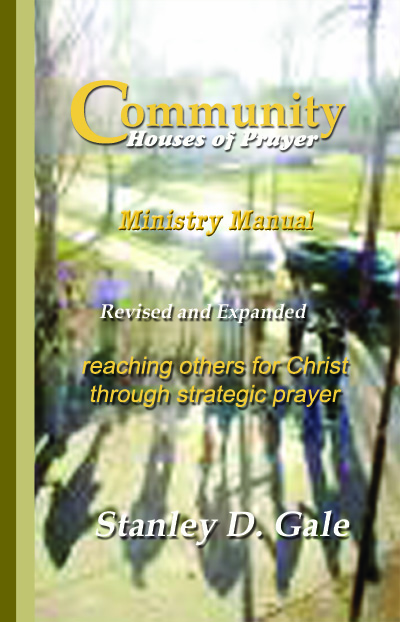-
The Bottle Dungeon
I can’t imagine what it would be like to be buried alive. Utter and absolute darkness. Trapped. A living death. No way out.
It makes me consider what hell would be like. The Bible describes hell as a place of punishment, reserved for those who rebel against God.
The book of Revelation says that “if anyone’s name was not found written in the book of life, he was thrown into the lake of fire” (Rev. 20:15).
Sometimes we are led to believe that Satan is a warden of sorts over hell, his demons the jailers, but that same chapter declares: “The devil who had deceived them was thrown into the lake of fire and sulfur where the beast and the false prophet were, and they will be tormented day and night forever and ever” (Rev. 20:10).
Satan and the fallen angels will suffer the same fate as those who belong to his kingdom. Those who are of their father the devil (John 8:44) will share his judgment. When the fallen kingdom of Satan perishes, so will his subjects. The lie they believed will catch them up. Jesus says as much to unbelievers at the final judgment: “Then he will say to those on his left, ‘Depart from me, you cursed, into the eternal fire prepared for the devil and his angels.’” (Matt. 25:41).
Eternal life is paralleled with eternal punishment. Jesus goes on to say, “And these will go away into eternal punishment, but the righteous into eternal life” (Matt. 25:46).
Revelation is written in apocalyptic genre, using evocative imagery to generate a visceral response that mere prose cannot. Such a genre communicates truth visually. For that reason, the truth conveyed is to be taken actually but not literally. We can see that when in the same context we read of “Death and Hades” being thrown into the lake of fire (Rev. 20:14).
But hell is real. Jesus taught about it, with urgency and appeal (e.g., Matt. 13:41-43, 49-50). These references are found in parables, another medium for figurative language. Yet Jesus also spoke of hell in other contexts, such as the “hell of fire” in Matthew 5:22 and 18:9. The epistles speak in the same fashion, such as Paul does in his second letter to the Thessalonians: “They will suffer the punishment of eternal destruction, away from the presence of the Lord and from the glory of his might” (2 Thess. 1:9).
To be away from the presence of the Lord is not to say that God is not present in hell. The Scriptures teach that there is nowhere that God is not. He fills all in all (Ps. 139). Rather, hell is devoid of God’s gracious presence. No light. No grace. No hope. Ever. Only justice.
No one can really know what hell is like. While we can affirm certain characteristics, we cannot be dogmatic about it, but we must acknowledge it is real. It relates to the justice and wrath of a holy God, inflicted upon all those who reject the One who suffered its torments on Calvary’s cross.
John lays it on the line: “Whoever believes in the Son has eternal life; whoever does not obey the Son shall not see life, but the wrath of God remains on him” (John 3:36). And if the wrath of God remains, the torment of hell awaits.
I recently had opportunity to travel to Scotland. One of the places I visited was St. Andrews Castle, just north of Edinburgh. The medieval castle ruins are situated on a rocky outcropping overlooking the North Sea. It boasts a fascinating history, including a connection to John Knox, the Scottish Reformer.
What haunts me, though, from my visit to St. Andrews Castle was the dungeon. It’s called the Bottle Dungeon because of its shape. The rock had been hollowed out in the shape of a laboratory flask, tapered at the top and flaring at the bottom.
I peered into the opening to see the distant stone floor. I couldn’t help but shiver as I imagined what it would be like to be thrown into it. No stairs. No ladder. No comforts. No escape. Likely broken bones upon impact. Brutally cold. I cringe to think how desperate, how claustrophobic that would have been, accentuated by the shape that offered no purchase for freedom.
That bottle dungeon represented to me sheer hopelessness and helplessness. Away from all comfort. An apt picture of the torment of hell.
I don’t like the doctrine of hell. I try to find solace in annihilationism, but there are passages that just don’t fit. Yet, it’s hard to imagine the new creation, free from sin and effects of the fall, having a bottle dungeon. How do vestiges of the fall find a place in the unpolluted and inviolable sin-free new?
But this I know. God is a holy God. His justice must be vindicated, His wrath satisfied. Jesus took from our hand the cup of wrath we deserved. He drank that cup on the cross of Calvary, to its very dregs, propitiating the wrath of God for those He came to save.
Against the backdrop of the horrors of hell, God extends hope. He points to the cross, where love and mercy flow mingled down. In fact, that satisfaction of God’s justice is the showcase of His love. “In this is love, not that we have loved God but that he loved us and sent his Son to be the propitiation for our sins” (1 John 4:10).





